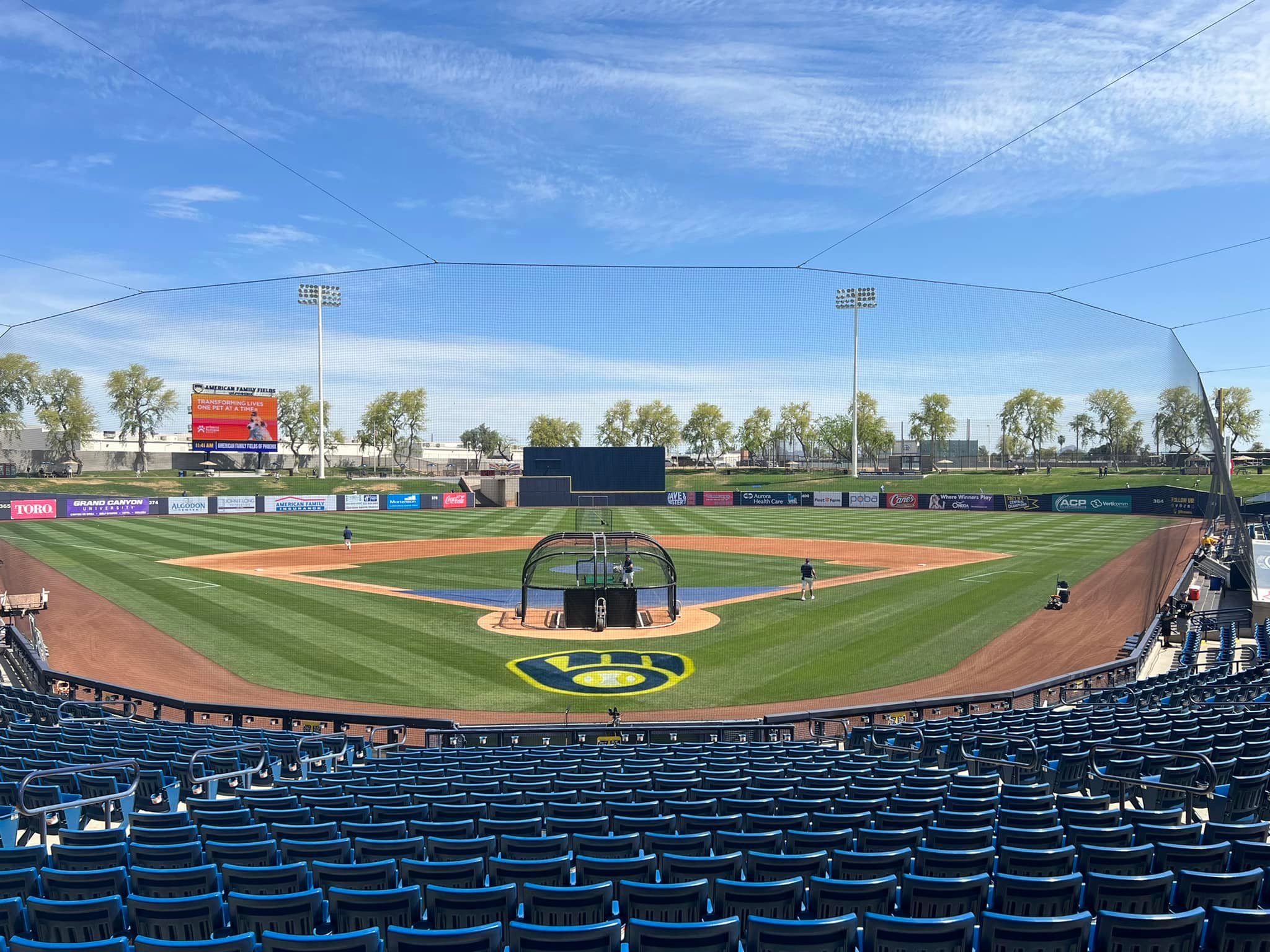
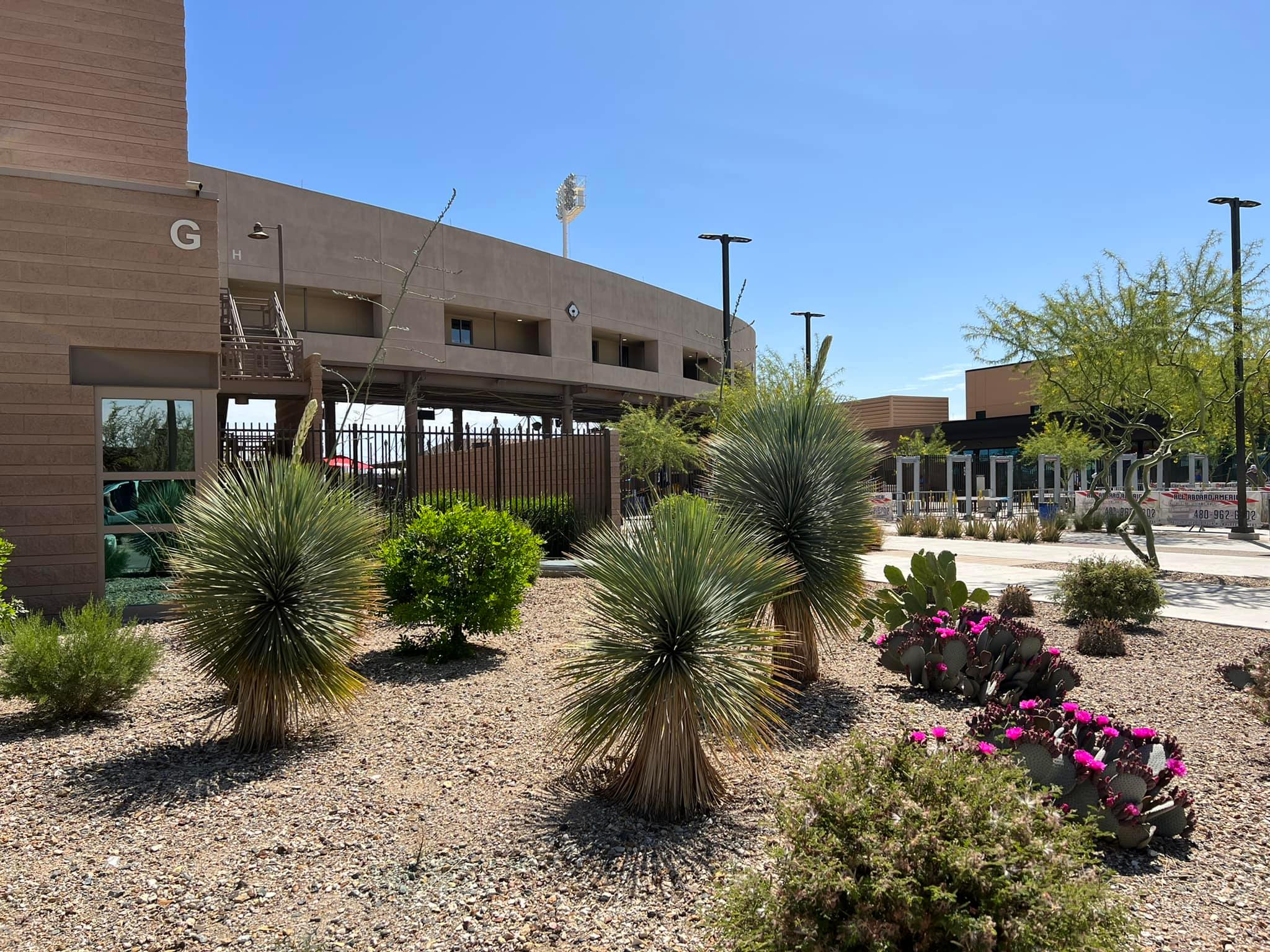
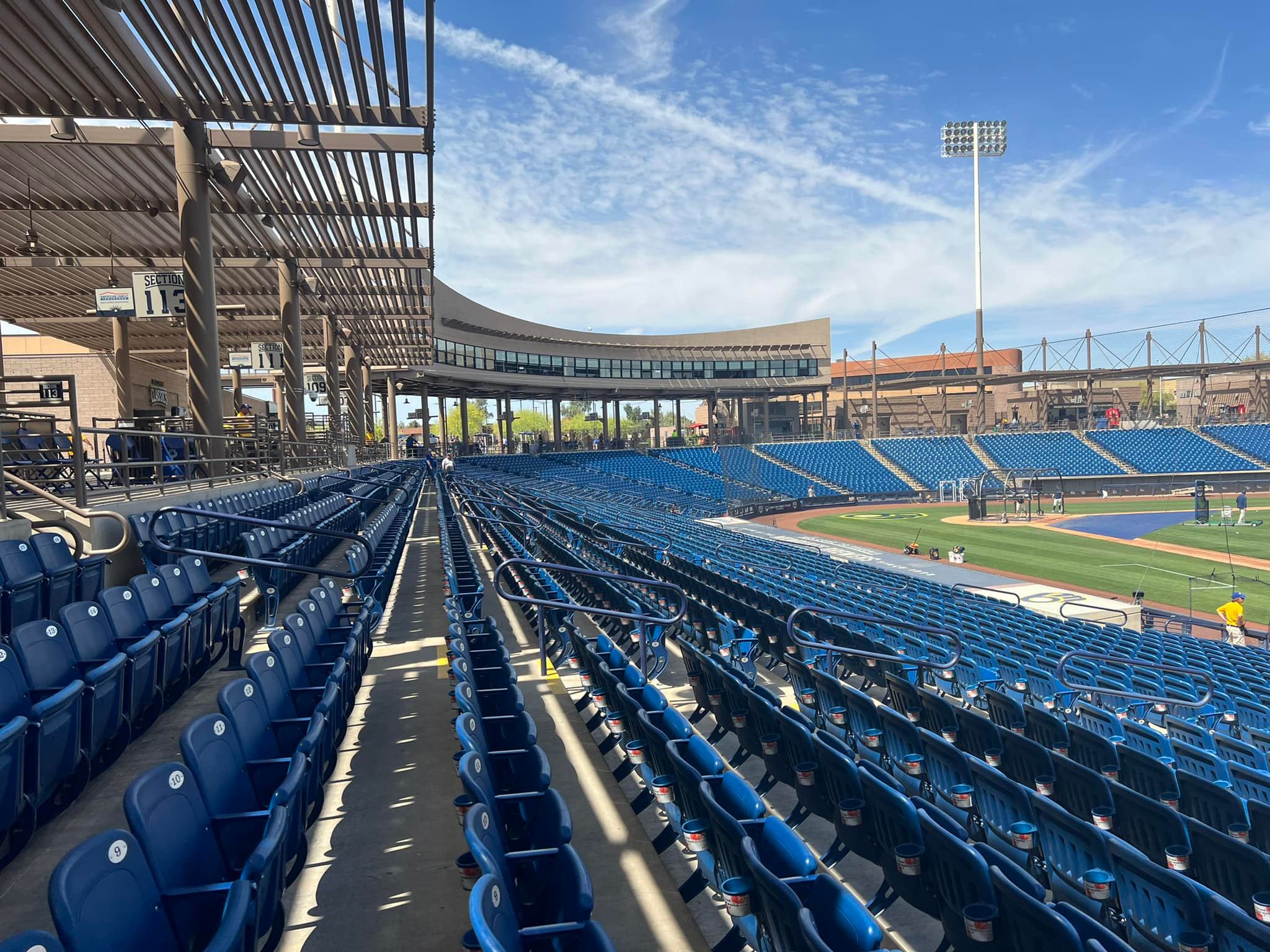


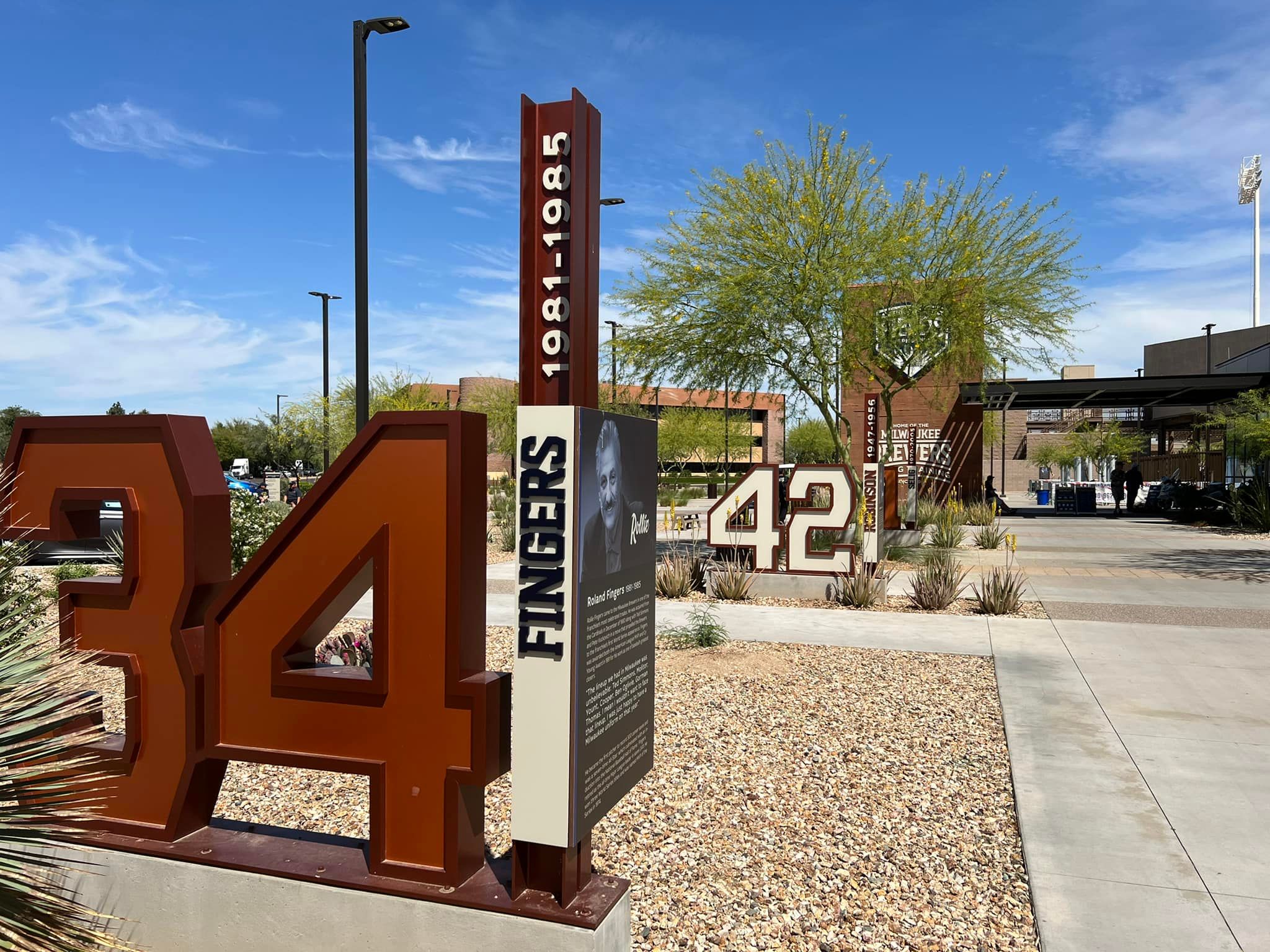
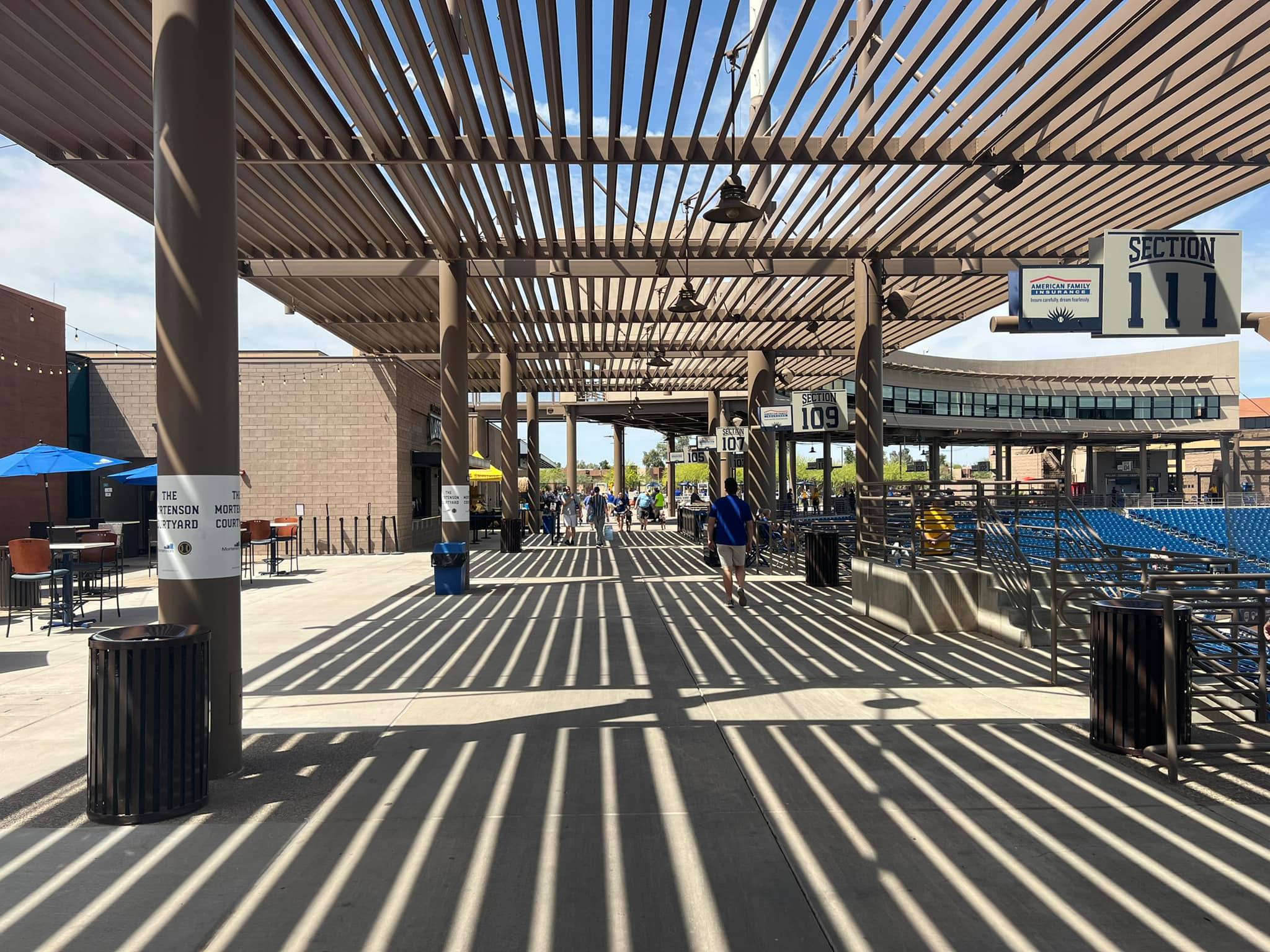


American Family Fields of Phoenix
| Setting | 6/10 | 1 Thumb Down | Location/Access | 6/10 | 1 Thumb Down |
|---|
| Architecture & Aesthetics | 24/28 | 1 Thumb Up |
|---|---|---|
| Exterior Design/Aesthetics | 8/10 | 1 Thumb Up |
| Interior Aesthetics/Visuals | 13.5/15 | 1 Thumb Up |
| Concourse Aesthetics | 2.5/3 | 1 Thumb Up |
| Functionality & Essentials | 21/25 | 1 Thumb Up |
|---|---|---|
| Sightlines | 8/10 | 1 Thumb Up |
| Seat Comfort | 4/5 | 1 Thumb Up |
| Concourse Functionality | 6/7 | 1 Thumb Up |
| Scoreboards/Tech | 3/3 | 1 Thumb Up |
| Amenities & Features | 11.5/20 | 1 Thumb Down |
|---|---|---|
| Concessions | 8.5/10 | 1 Thumb Up |
| Premium/Group Seating | 1/4 | 1 Thumb Down |
| Social Spaces | 2/4 | Thumb Sideways |
| Kids Areas | 0/2 | 1 Thumb Down |
| Atmosphere, Vibe, & Policies | 14/17 | Thumb Sideways |
|---|---|---|
| Ballpark Personality | 9/10 | 1 Thumb Up |
| Fan Support | 3/5 | 1 Thumb Down |
| Ballpark Policies/Staff | 2/2 | 1 Thumb Up |
| Bonus | 8 |
|---|---|
| Final Score | 84.5 |
|---|---|
| Ranking | AZ: #6/10; Overall: #15(t)/23 |
|---|---|
By: Cole Shoemaker
Conceived of as a distinctly minimalist ballpark bucking the trend of elaborate spring training venues with luxury suites and party decks, American Family Fields of Phoenix (née Maryvale Baseball Park, opening in 1998) always seemed peculiarly stuck in time. I think I have a good grasp on this because my visits were especially periodic (2005, 2011, 2018, and 2022).
Ballparks commonly make minor tweaks to upgrade the fan experience, but Maryvale Baseball Park always stayed exactly the same down to the last detail. Year after year, the park had a bottle of Secret Stadium Sauce in the same place, the same pair of rusting picnic tables in center field, and even the same old guy handing out kettle corn samples at Happy Jack’s Kettle Korn. It had an almost endearingly eerie quality to it.
After $60 million in renovations, the newly minted American Family Fields of Phoenix finally took some notable steps forward, but it still feels stuck in time.
Yes, the renovations significantly enhanced the ballpark’s aesthetics, particularly by beautifying the landscaping around the park. The park is functionally improved across the board, with a new home plate entry plaza, new seats, a new videoboard, and an expanded concourse. Even some of the amenities have gotten better, with enhanced food options and a new patio social space.
As such, American Family Fields is now a totally respectable Cactus League ballpark, but both the park’s underlying design and low-key atmosphere remain.
The park still remains behind the times in fan amenities like concessions, destination bars, social spaces, party decks, unique seating options, kids’ areas, and other features.
Given the cost of the renovations, one has to conclude this is not an oversight, but a deliberate effort to maintain this no-frills, intimate spring training vibe. But as the classic McKechnie Field in Bradenton, FL (Pirates) showed us, there’s no reason why you can’t upgrade the fan amenities while retaining a classic design. The amenities are similar to something like Tempe Diablo Stadium and leaps and bounds behind every single new or renovated spring park in the 21st century.
Nevertheless, I still think American Family Fields is quite a good facility, with particularly underrated architecture and aesthetics and plenty of thoughtful nods to the Milwaukee Brewers.

The only spring facility located in Phoenix proper, American Family Fields has the worst location in the Cactus League, perhaps in all of spring training. Once a promising neighborhood, the area has developed a reputation for crime. There are plenty of restaurants nearby, but they are pretty depressing. There is a reason the Brewers rarely host night games.
I’ve always thought the architecture and aesthetics were attractive, and they were further enhanced with a new desert beige tone to better match the environment. I love how the ballpark totally blurs the concepts of “interior,” “exterior,” and “concourses.”
With no traditional façade beyond home plate and jagged stonework down the line, the exterior design is unique. Fans can walk up behind home plate and peak through fences. The new grand entry plaza behind home plate boosts my score significantly as well. The landscaping around the park now rivals that of two of the best spring parks, Salt River Fields and Camelback Ranch.
The interior aesthetics remain authentically simple and elegantly minimalist. Unlike similarly no-frills parks, it doesn’t cross over into “bland” or “uninspired” territory, managing to pull off the quaint sensibility with a clearly articulated design concept. American Family Fields’ signature feature is its sweeping press box design. The neo-modern curvature extends upward and outward, creating quite an inviting vibe. The trellised boxy canopies resembling square umbrellas generate a wonderful juxtaposition.
Unfortunately, American Family Fields is the only Cactus League park that doesn’t sport mountain views, so the outfield design isn’t as pleasing. But overall, this park’s beauty is overlooked.
American Family Fields always had a number of tasteful features that reminded Brewers fans of home, but that was taken up a notch with the renovation. On the walkway leading up to the home plate entrance, the Brewers installed a series of retired number sculptures. Each has a biography of the associated player.
The sausage races occur every game during the 6th inning, and “Roll out the Barrel” is performed after the 7th inning stretch. Five varieties of sausages are available, including the brat. Finally, the park serves the Brewers’ famous “Secret Stadium Sauce.”
Improved with the renovation, American Family Fields is an above-average park functionally. Without much fixed seating down the lines, the sightlines are fine, lacking any orientation problems. An excess of foul territory separates the sightlines from parks that score better.
Fold down seats replaced the bleachers, and all existing seats are now fitted with cupholders (inexplicably, the Brewers fixed this in 2020, not originally after the 2019 renovations).
The Brewers’ spring training park features an open, 360-degree concourse with great field visibility due to the height of the structures above. There is an expansive berm in the outfield. The home plate plaza serves as a great entryway. The concourse was expanded down the first base line, but it can still be a bit narrow at times. Finally, a state-of-the-art, HD videoboard was added.

You may be thinking that complaints about American Family Fields’ lack of amenities are arcane, but it is obviously apparent to anyone who has been to any other park in the Valley. The renovation improved things somewhat, but they still feel behind the times.
Perhaps it’s important to reiterate that we don’t take player development facilities and their corresponding amenities into account, which are top-of-the-line. We solely look at features from the perspective of the fans inside of the park.
Concessions stands were removed from the plaza behind home plate and placed in the corners, but the food has gotten a tad better: in 2022, the Brewers offered a specialty BBQ and crepes served by local food trucks. Traditionally, notable items include Napa Valley Noodles, BBQ, Bratchos, cheese curds, specialty burgers, and fish fry. More cooking space was also added, giving the Brewers the ability to cook fresher food.
The ballpark is still relatively lacking in social spaces, permanent destination bars, and ancillary sitting areas on the main concourse. The one bright spot is upscale patio area on the first base side. Picnic tables along the outfield concourse are otherwise the only place to hang out, as the Brewers removed the picnic area behind home plate to create better egress and ingress. American Family Fields of Phoenix is toward the bottom of spring training in this category.
Group areas and premium seating options are also as non-existent as any spring training park in baseball. There are only two enclosed skyboxes reserved for sponsors and team officials. Only a group space with poor field views in the right field corner. Essentially, standard grandstand seating and the berm are fans’ only option. Highly unusual.
Unlike most other multimillion-dollar renovation projects, American Family Fields lacks any kids’ areas. Needless to say, this isn’t one of those places you want to enter hours before game time and “explore,” unless you want to watch batting practice.
Again, this paucity is seen nowhere else in spring training except maybe Tempe. Someone who is inclined to view this website probably doesn’t care about these features, but the vast majority of people in the ballpark do. I could see the hardcore fan even liking this park more because of its lack of frills. But as I write in the criteria, I take all factors into account. Amenities aren’t as important as aesthetics or functionality, obviously, but they matter for the nominal fan. American Family Fields is an outlier.
In sum, Phoenix didn’t renovate American Family Fields of Phoenix to the level of parks in Salt River, Glendale, Mesa, or Peoria, for example, with the primary contrast being the lack of amenities, but the park offers a memorably minimalist feel and solid vibes in contrast to the more elaborate complexes across spring training.